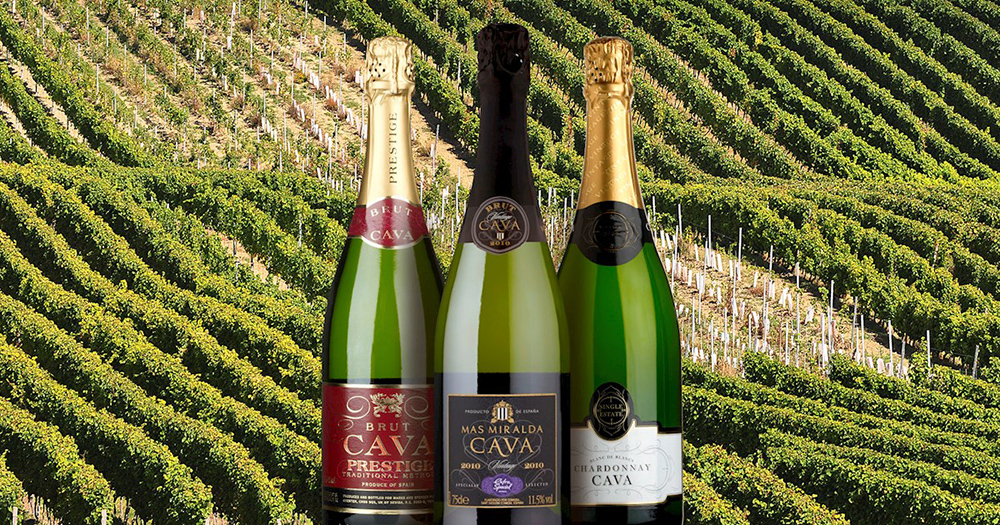By David Setley
As many folks who stop into Passion Vines know, my wife and I just returned from a cruise vacation that traveled up the Iberian Peninsula with stops included in Spain and Portugal. At the request of several wonderful people who read this column and/or attend our wine events, I’d like to share a bit about my vacation through the wines I enjoyed during the trip.
First destination: the wine regions of Catalunya, Spain.
The English word for the region that encompasses the northeastern provinces of Girona, Tarragona, Lleida, and Barcelona is Catalonia. Of those four cities, the largest and most well-known is Barcelona, which happens to be where our vacation began.
Between the resident historian on our cruise (I didn’t even know cruises had resident historians) and a Rick Steves’ walking tour (highly recommended app for anyone traveling overseas), we learned so much about the fiercely independent Catalan people and their history.

The region had been occupied and controlled by the Romans until the 5th century, followed by the Gauls, the Moors, and Charlemagne in the 8th century. In 1137, the Count of Barcelona married the Queen of Aragon, uniting the kingdoms and becoming a major center of trade. In 1469, the kingdom was under the reign of Ferdinand and Isabella of Castilla, the power couple who sponsored Christopher Columbus’ exploration of 1492, which launched from Barcelona. Today, after enduring a period of dictatorship, the Catalan language is spoken proudly in the region, in addition to Spanish.
Hopefully I did justice to that history lesson. Now let’s get on to the wine.
The wine region utilizes the Catalan name for this area: Catalunya. Many varietals of wine are grown in Catalunya, including Tempranillo, Cabernet Sauvignon, Sauvignon Blanc, Garnacha, Pinot Noir, Monastrell, and Carignan. While there are many subregions, three stand out for the particularly noteworthy wine produced in each: Penedes, Montsant, and Priorat.
The Spanish sparkling wine known as Cava is the most famous wine produced in Penedes. Cava is to Spain what Prosecco is to Italy and Champagne is to France. It is made using the same secondary fermentation process as its European cousins, but is made from grapes that are native to the region: Macabeu, Xarel-lo, and Parellada.
We enjoyed many Cava breaks during our vacation, as it is the perfect beverage for a warm summer day. Having a glass with tapas was high on our to-do list once we landed in Barcelona. It is wonderful by itself or paired with small foods or even desserts. The wine is dry, light-bodied, with high acid, and, of course, delightfully effervescent. I personally find Cava to be a bit drier than most Prosecco, with a lightly floral aroma and hints of almond flavor.
A favorite of mine is the Naveran Brut. This wine is produced from organically grown grapes and is vegan-friendly. If you haven’t tried a Cava yet, take this as your invitation. It’ll make you feel like you’re on vacation.
The Montsant subregion of Catalunya is famous for the Carignan grape, a varietal you may not be familiar with. Although Carignan is also grown in the Languedoc-Roussillon region of France, it is often overshadowed by many other varietals there. In Montsant, it is a star. Carignan is a highly food-friendly wine and pairs well with meats, poultry, cheese, and vegetables. It is medium-bodied, medium-tannin, fruity, but also dry and earthy with lightly spicy notes.
One of my favorites is the Montsant Can Blau 2020. This wine is mostly Carignan with a bit of Garnacha and Syrah added for complexity. The dominant fruit flavors are dark cherry and plum with a notable savory-ness. Similar to Syrah-based wines, you may note a slightly gamey aroma. I tend to enjoy this aroma but others, including my wife, do not. If you find it unpleasant, decant this wine for 30-60 minutes before serving. It’s a Catalonian wine you should definitely try.
Our final stop on this part of our wine vacation was a very small region of Catalunya called Priorat. I like to say that Priorat is to Garnacha what Chianti Classico is to Sangiovese. It is arguably the best region for growing this truly outstanding Spanish varietal.
As with other Old-World wine regions, you will rarely see the name of the grape on a Priorat label. If it is a Priorat, the dominant grape will be Garnacha often blended with Carignan, Syrah, and occasionally Cabernet Sauvignon. These dry, full-bodied red wines tend to be relatively high in alcohol with flavors of blackberry, chocolate, licorice and leather.
Finding a Priorat in Barcelona was also high on our to-do list. After a lovely visit to a local wine shop, we took a 2012 Priorat onto our cruise ship to enjoy on a sea day. It was outstanding! Although you won’t find that exact bottle here, try the Clos de Tafall 2019 Priorat. The flavor is rich and bold and the tannins are firm. The acidity allows this wine to pair well with beef, lamb, game, and grilled foods. Or, do what we did – enjoy it on a deck with a plate of cheese and crackers while chatting about summer adventures.
Many of the stops on our cruise were not notable wine locales, although we did enjoy an extensive wine list onboard.
Next week I’ll share a bit more about our trip and some wines from the Iberian Peninsula. In the meantime, feel free to contact me with any questions at dsetley@passionvines.com, or stop into the store.
Until next time, Happy Wining!
David Setley is enjoying his retirement from higher education as a wine educator and certified sommelier at Passion Vines in Somers Point, New Jersey.










